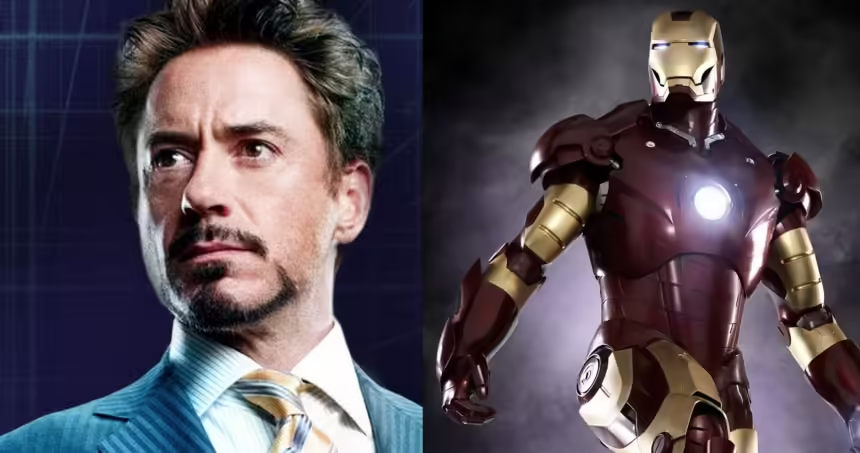Introduction to Tony Stark
Tony Stark, more famously known as Iron Man, is a pivotal character in the Marvel Universe, serving not only as a superhero but also as a brilliant businessman and inventor. Created by writer Larry Lieber, along with artists Don Heck and Jack Kirby, Tony Stark first appeared in 1963 in “Tales of Suspense” #39. His character is defined by an intricate mélange of intelligence, charm, and privilege, making him one of the wealthiest fictional characters across various media. Stark is the owner of Stark Industries, a multinational conglomerate specializing in advanced technology and weaponry, contributing significantly to his impressive financial status.
Born into a wealthy family, Tony Stark’s intellect was apparent from a young age. He showcased remarkable engineering skills, which led him to attend the Massachusetts Institute of Technology (MIT) at the mere age of fifteen. After the untimely passing of his parents, Stark inherited their vast fortune and the family business, propelling him further into the world of technology and innovation. His contributions to the industry, particularly in the field of robotics and artificial intelligence, are critical to understanding the high value associated with the “Tony Stark net worth.”
Stark’s character also embodies the quintessential traits of a modern philanthropist, often utilizing his wealth and resources for the greater good. His persona exudes charisma, which makes him a natural leader and a prominent figure in global affairs. The juxtaposition of his ego with his moral quests enriches his narrative within the Marvel cycle. Moreover, it is essential to note how his background – from being a carefree playboy to a responsible hero – offers a nuanced understanding of his financial acumen and lifestyle, ultimately leading to the perception of Tony Stark as a multi-faceted billionaire within popular culture.
Sources of Tony Stark’s Wealth
Tony Stark, the fictional billionaire industrialist, is well-known for his immense wealth, which can be attributed to various sources within the narrative of both the films and comics. At the heart of Stark’s fortune lies Stark Industries, a multinational conglomerate initially founded by his father, Howard Stark. The company specializes in advanced technology and defense contracting, which contributes significantly to Tony Stark’s net worth. Under Tony’s stewardship, Stark Industries expanded its focus on creating groundbreaking technologies, including the development of the Iron Man suit, which showcases his innovative prowess.
Moreover, Stark’s adept business acumen allows him to navigate the complex world of corporate finance effectively. Stark Industries is not merely a weapons manufacturer; it engages in various sectors, including renewable energy and artificial intelligence, further amplifying his wealth. The company’s consistent growth and diversification illustrate how Tony Stark utilizes his entrepreneurial skills to adapt to market changes and emerging technologies.
In addition to his primary business operations, Stark also invests heavily in research and innovation. His ventures in scientific advancements often yield substantial returns, as seen in the various projects that push the boundaries of contemporary technology. This investment strategy aids in reinforcing Stark’s financial foundation and amplifying his reputation as a forward-thinking industrialist.
The portrayal of Tony Stark in films and comics showcases his relentless pursuit of innovation, emphasizing his strategic investments and responsible management of Stark Industries. Without doubt, Tony’s wealth is portrayed as more than just numbers; it reflects his dedication to philanthropy, particularly in seeking solutions for global challenges through technological advancements. Ultimately, these facets of his corporate empire and innovation efforts significantly contribute to the impressive magnitude of the Tony Stark net worth as depicted across various media.
The Impact of Tony Stark’s Lifestyle on His Net Worth
Tony Stark, a fictional billionaire portrayed in the Marvel Universe, epitomizes a lavish lifestyle that greatly influences his perceived wealth. The extravagant spending associated with his character reflects both his personality and the broader cultural narratives surrounding wealthy individuals. His opulent lifestyle comprises a stunning mansion in Malibu equipped with cutting-edge technology, multiple luxury vehicles, and beautifully crafted custom-built Iron Man suits. Each of these expenditures contributes significantly to the image of Tony Stark as a billionaire whose net worth is apparent through his extensive assets.
Stark’s lifestyle not only showcases his wealth but also raises questions about the sustainability of such lavish spending. For instance, the maintenance of his luxurious home, coupled with the costs involved in developing his advanced technology and suits, results in substantial financial outflows. Although Stark is often portrayed as having near-unlimited resources, the realities of managing such a lifestyle highlight the balancing act between expenditure and overall financial health. It is also worth noting that Stark’s philanthropic efforts, while aimed at improving humanity, can further strain his finances. Yet, these efforts enhance his public image and potentially influence his net worth positively by fostering a narrative of a responsible billionaire.
Moreover, Stark’s persona as a playboy billionaire plays a significant role in shaping public perception. The media portrayal often emphasizes his extravagant parties, luxurious vacations, and high-profile relationships, simultaneously boosting his notoriety and the allure of his wealth. This multifaceted image not only differentiates him from other wealthy characters in popular culture but also instigates discussions about what it truly means to be rich. While exploring Tony Stark’s financial narrative, it is essential to recognize the interplay between his lifestyle choices and public perception, which ultimately reflects the complexities of his net worth.
Comparing Tony Stark’s Net Worth with Other Characters
When evaluating the financial stature of fictional characters, Tony Stark stands as an emblem of wealth within the Marvel Universe. His net worth, estimated at around $100 billion, places him among the most affluent figures, significantly outshining his superhero peers. For instance, while characters like Bruce Wayne, who shares a similar billionaire status in DC Comics, boasts a net worth of approximately $80 billion, Stark’s wealth benchmarks a standard of opulence that extends far beyond mere monetary value. This dynamic not only illustrates Stark’s financial superiority but also accentuates the differences in wealth distribution among superheroes.
The portrayal of wealth in various media often varies, heavily influenced by character backstories and narrative arcs. Characters such as Oliver Queen, better known as Green Arrow, present a contrasting wealth narrative, valuing responsibility over excessive wealth. With a net worth of around $75 million, Oliver’s portrayal emphasizes a more altruistic approach to riches, distinguishing him from Stark’s flamboyant lifestyle fueled by high-tech innovations and extravagant expenditures.
In comparison, characters like Lex Luthor represent a darker aspect of wealth. His net worth, estimated around $10 billion, reflects a different approach to wealth, often associated with villainy and unscrupulous business endeavors. This stark contrast highlights how wealth can function as a narrative device, serving to define characters and their arcs. The disparities in net worth among these characters elucidate the broader themes of wealth and morality prevalent within their respective stories.
Ultimately, Tony Stark’s financial standing is not merely a number but a critical component of his identity. It symbolizes the complexities of wealth in the superhero genre, offering a lens through which readers can contextualize the varying portrayals of affluence in fictional narratives, enhancing their understanding of Stark’s character within this spectrum.
You May Also Like





